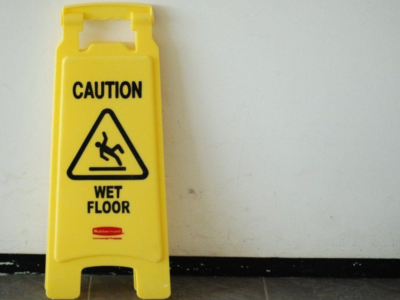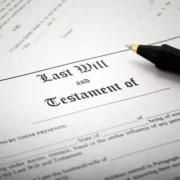Through our socialisation or enculturation, a type of tunnel vision is (unconsciously) created. The result is that a ‘dominant reality’ appears at the end of our perceptual lenses. Less Than Equal explains how our enculturation comes to filter the way we perceive reality:
‘Our perception is the outcome of our own individual experiences and knowledge, which blends to produce “filters” or mirrors creating, reflecting, or distorting an image at the end of the kaleidoscope’s cylinder.’
Anglo, male, able-bodied, heterosexual values and views permeate institutions including our courts, and very much affect our own individual lenses that filter the language, experiences, and knowledge to which we are exposed.
Unconscious Bias and Gender Bias
In short, the way we perceive reality, and the reality of others, is in part a function of our limited experience and knowledge.
And, a very important point here: We each often forget that our, ‘thoughts, behaviours, and ways of looking at the world were learned, and learned in a particular context. In essence, we’ve each experienced what has been labelled as cultural amnesia.
Therefore, we assume what we’re seeing, thinking, and believing are absolute truths, rather than images mediated by the lenses of our perception. We then begin to think in terms of natural and normal (our way) and unnatural and abnormal (others’). This applies to all of us—at least to some extent—no matter what our personal commitments to human rights are, and no matter if we’re female or male.
Upon this foundation of forgetfulness emerges a belief in constructs of ‘neutrality’ and ‘fairness’, when in fact a myriad of assumptions unconsciously filters out the diverse experiences and ‘realities’ of many – including women.
How does all of this affect law reform and access to justice for women?
Women and Law
The dominant gendered reality is the tip of the iceberg (that is, overt sexism). Below the surface is layer upon layer of individual and community level learned assumptions. Again, for the most part, many of us are completely unaware of these biases, as they are endemic and permeate both social institutions and our subconscious.
From chapter 1 of Women and the Law in Australia, ‘the legal landscape is dotted with legal concept signposts of objectivity, reasonableness, relevance and ordinary. However, the landscape is undulating and far from level, creating obvious obstacles in accessing justice for women,’ ‘… when the ‘iceberg’ appears to be melting from global warming (law reform), given such a porous filter, gendered ideas and constructs may continue to affect judges’ and jurors’ thinking, especially in their interpretation of nebulous terms and concepts such as ‘reasonable’ objective and relevant.’
The societal biases iceberg translates the unconscious biases arising from gender stratification and inequality into legal concepts and practices that may exclude the ‘reality’ – the lived experiences – of some women.
Access to Justice
Thus, laws may fail to provide justice. What we’d like to think are antiquated norms aren’t antiquated after all. These norms and stereotypical ways of thinking continue to inform and impact the law, working to exclude women’s experiences. Discretion – even when it appears to have been limited by Parliament – is frequently read back into the law.
Anna Carline and Patricia Easteal ask in the book, Shades of Grey, ‘Is the law simply too male dominated, too imbued with the ‘masculine’ to be used productively to bring about positive change?’
The Legal Response to Violence Against Women
The answer is optimistic. Perhaps it is most appropriate to conceptualise feminist engagement with the law as consisting of simultaneous successes and failures, concluding that the Government’s legal response to violence against women needs more work. The legal system has traditionally contributed to gender inequality, acceptability of violence in the home, and women’s responsibility for men’s sexuality. It’s because of this role and its power that over time law can be an instrument of broader social change by challenging the social norms perpetuating inequality and the exclusion of women’s voices.
It’s extremely important that having recognised the law is not immune to the cacophony of tenor, baritone, bass, and counter-tenor assumptions and epistemology, we take certain steps to ensure the so-called neutral statutes and standards are inclusive of the, ‘full-ranged chorus of women’s voices.’ On the other hand, more work improving the legal response to violence against women means it’s not just the laws needing to be reconceptualised and, in some cases, redrafted.
There is hope for the future and the role of law, and it’s important to acknowledge significant improvements to both substantive and procedural law have been made. However, it’s also important to highlight the law’s failure to recognise and respond appropriately to the plight of women and demand it does otherwise. Legal Light Bulbs is committed to that aim through research, training and the provision of expert court reports.
How Legal Light Bulbs Can Help
Additionally, the cultural landscape also requires a major redesign. These are ‘big picture’ changes. Those myths and beliefs populating the social setting need to change. For instance, instead of maintaining and perpetuating sexist attitudes and victim-blaming attitudes, objectifying women and girls, constructing violence (or the avoidance of) as the responsibility of women, we need clear messages and programs empowering survivors/victims. As individuals we can each work to do so, and here’s how.
There is a lot we can do vis a vis the proverbial iceberg. We can each begin to have ‘light bulb’ moments by identifying our invisible assumptions about what is normal, what is ordinary, what is reasonable, what is neutral, or that there actually is no neutral. As individuals – lawyers, criminal justice workers, students, and others in the community, we must begin to shed the ‘blinkers’ concerning violence against women.
Lawyers and other practitioners need to be attuned to the different voices and experiences of their clients to facilitate improved access to legal remedies.
Once you have an epiphany, there is no going back, and as our own ‘iceberg of biases’ thaws, we can begin to have a shared understanding of reality, providing better responses as colleagues, friends, or legal practitioners.
Legal Light Bulbs aims to continue doing this work, and to ignite more ‘cerebral light bulbs.’ Contact Legal Light Bulbs now to learn more.












Comments